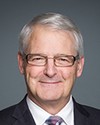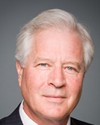Mr. Speaker, it is with great regret that I see the government moving forward with significant changes to the museum. It is one thing to simply rebrand and change the name. I know the government is in tough times financially. It has the largest deficit in history, which it is having a hard time bringing down, and we have the 150th anniversary of our nation coming up. Perhaps it has decided it cannot build a new monument to recognize that point in time in history, so the best thing to do is to take some kind of institution that already exists, which is our magnificent Museum of Civilization, and rebrand it.
From what I can determine from Bill C-49, that is mostly what the bill would accomplish.
I forgot to mention, Mr. Speaker, my thanks to the page, that I will be sharing my time with the hon. member for Laurier—Sainte-Marie, with whom I am very pleased to do so.
If one looks into the depths of the bill, we are moving away from proudly having a Museum of Civilization, which had a mandate of not only showcasing to Canadians. Thousands upon thousands visit the Capital every year to go to the museum, which was designed by, I am very proud to say, Mr. Cardinal, an internationally renowned architect. It is a masterpiece of architecture renowned worldwide. The good news is, I think he is being continually engaged, and I hope he is, to ensure that any changes to this monument are in keeping with the incredible design he put in place.
Apart from changing the name from the Museum of Civilization to the museum of Canadian history, we need to delve more into exactly what the government is up to. There are changes in the legislation that change its mandate. The mandate right now includes doing research. I think it is in clause 8 that this mandate to do research has been removed to become the museum of Canadian history. This raises the question of who then will do the research for these displays.
If we look in more detail at exactly what the proposal is, and I refer back to the speech by the minister about his intent in this legislation, apparently there will be a major fundraising exercise. There was a reassurance given to Canadians that they did not have to worry because not one more cent of taxpayer money would be spent on this monumental exercise toward the celebration of 150 years of Canada and that we would be move toward partnerships. What that raises for me is in the language. We saw that word “streamline” in all of the budgets and throne speeches of the government.
The Conservatives have two favourite words. One is “streamline”, which basically means fast-track and get rid of any legislation that might slow things down. The other word is “partnerships”. It appears that the new way of recording history in Canada and displaying it is going to be in partnerships. With whom? Will that be the way we will now do partnerships with our university institutions, so that, increasingly, research in our country has to move from basic research to applied research and they have to partner with major corporations?
Why is this of grave concern? There has been a lot of talk by the minister, and by the other Conservative members lauding the bill, that it will be a whole new way of doing business and there will be greater linkage with the small local museums of our country. There seems to be a short memory of what the government has done to the small local museums. I sat in the House when the government went through and erased the support to all the small local museums in our country.
Therefore, that leaves us with who can partner and who will be able to take advantage of these mechanisms. My understanding is there is some kind of a mechanism where monies can be transferred back. I stand to be corrected, but it seems to be that the mechanism whereby we will have these exchanges back and forth is if museums have enough money to put upfront to begin with, they too can display our national treasures and then they eventually they will be paid them.
However, if they are small museums whose funds are cut, how will they put up the dollars? More important, these are our national treasures. I know that from going to many of the events in the Art Gallery of Alberta, a lot of money was put into it and donated and given by various levels of government to ensure we could now borrow art internationally. The museums have to ensure their facilities are properly humidified and so forth.
Therefore, there is not a lot of clarity in here about exactly who will be paying for the transportation, displaying and packaging up again and sending back to Archives Canada, which raises another issue: who exactly is going to undertake this research? Now the newly called Canadian museum of Canadian history will not do the research and Archives Canada will no longer do the research. Who exactly will do this research? Is it the people with whom the museum of Canadian history will partner? Will we have the Suncor Energy display of the history of environmental protection in Canada? Who knows who will be displaying the history of first peoples in Canada?
I am a bit concerned about the remaking of the Canada Hall. People always ask how I like Ottawa and I say, “How would I know?” I tell them I never get to see Ottawa because I am always working hard for them. However, the last time I went to the Museum of Civilization, which I still like to call it, I remember I went specifically to the display of Dr. Yee. He was a Chinese herbologist who was a personal friend of my father's. Sadly, Alberta did not say it wanted Dr. Yee's herbal shop. To its credit, the Canadian Museum of Civilization took that, and it is displayed in the museum. Every chance I get, I go up and see Dr. Yee's shop and I think about my father and his relationship with this wonderful man.
Is that going to be gone? What is going to happen to this collection of information? Are we starting at zero? Who is going to make this decision?
Have we been making new appointments to the board? With the establishment of the new museum of Canadian history, are we going to have a clean slate for the board? We know where those appointees are coming from in the current government. Perhaps we will wait until after the next election and have failed candidates and have them appointed. I do not know.
I have a personal friend in Edmonton who is a textile conservationist and she used to be on the Canadian Museums Association board. She has a lot of valuable expertise. I look forward to following up with her and finding out what she thinks about these changes, especially on the removal of the research dollars.
Here is another interesting fact. The website for the Museum of Civilization no longer exists. I went to website to see what the Museum of Civilization offered and all the sites were gone. I did find one remaining site, and that was for visitors. When people visit the museum, they can put up their review and 256 people out of 350 found it excellent. People already think it is an incredible experience. Interestingly, in the comments they filed, most of them appreciated the aboriginal display.
It raises a lot of really important questions. Of course many of us are very saddened, and I know those who work for Canada Post are going to be saddened. Apparently, we are expunging the Canadian Postal Museum. Why? I do not know.
As I understand, there was $25 million spent on rebranding and consultation after the fact when the government had already decided what the name would be. I had hoped to share the very interesting process that went on when there actually was the in-depth consultation with Canadians about renaming the Museum of Man to the Museum of Civilization, but I will save that for questions.







